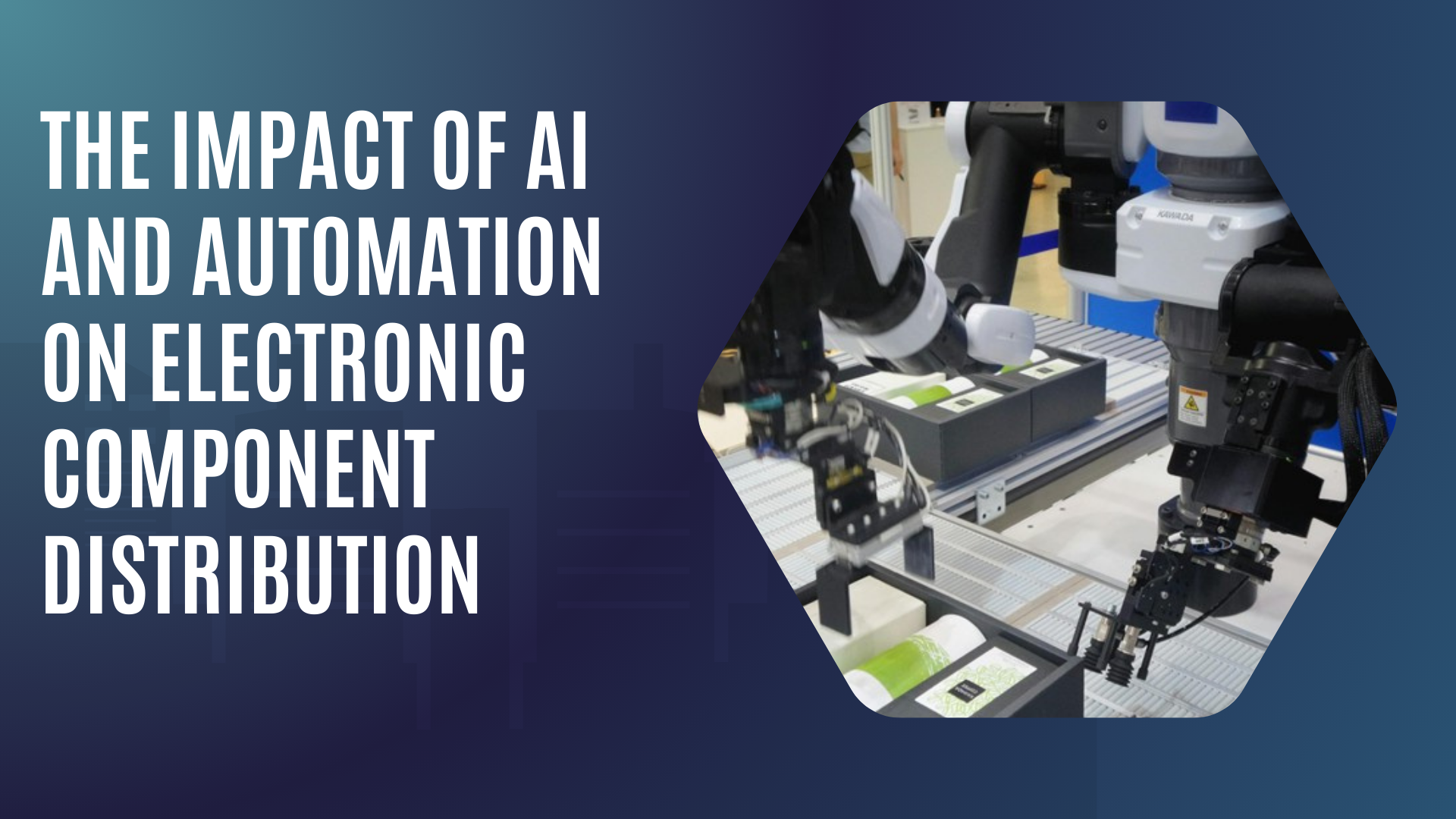Electronic component distribution, which has always demanded a delicate balance between precision and speed, is undergoing a transformation: the advent of artificial intelligence (AI) and automation isn't just altering part movement along global supply chains; it's entirely remolding the distribution landscape. Seasoned manufacturers and nimble startups alike must grasp this shift to maintain their competitive edge.
Streamlining Inventory Management
Many businesses consistently grapple with effective inventory management; traditionally, they depend on manual processes and outdated systems—prone to errors and inefficiencies. However, AI revolutionizes this arena by delivering real-time insights: stock levels, demand forecasting, and replenishment requirements are now within easy grasp.
Envision a system capable of forecasting your critical microchip shortage before it escalates into a bottleneck: machine learning algorithms scrutinize historical data, seasonal trends, and market fluctuations—empowering businesses to fine-tune inventory levels, curtail overstocking, and prevent stockouts. Automation tools work in tandem with AI systems; they initiate reorders autonomously, modulate warehouse activities, or reroute shipments—all without the need for human oversight. It not only cuts labor costs but also shrinks downtime—thereby guaranteeing smooth operations of production lines.
The best electronic component distributors embrace new technologies and try to go above and beyond to deliver the best experience for customers all across the globe. This software not only helps them with customer service but with helps companies receive critical electronic components to keep them operational.
Enhancing Supply Chain Visibility
Visibility has always presented a major hurdle in electronic component distribution: components are sourced from multiple countries and navigate numerous transit points—making comprehensive supply chain transparency a logistical nightmare; however, AI-powered analytics and automation solutions now provide end-to-end clarity.
Native domestic US speakers often pepper their language with descriptive phrases, saying things like "the technologies at play here deliver a sweeping view of the supply chain—they track shipments; monitor environmental conditions; and predict potential disruptions from weather or political tumult. With such insights at their fingertips, companies swiftly identify—and tackle—bottlenecks and delays: An AI system might spot an impending shipment snag from Asia and alert logistics teams or plot alternative paths—all this part of what's known as smart supply chain management." This unparalleled visibility proves indispensable: it allows businesses to remain agile and responsive—adapting operations instantaneously, ensuring a consistent stream of components.
Enhanced visibility promotes collaboration: suppliers, manufacturers, and distributors share real-time data—thereby improving communication and reducing misunderstandings. Such a collaborative approach strengthens relationships and ensures unified efforts toward common goals within the supply chain. Businesses can transform supply chain management into a strategic advantage by harnessing AI and automation.
Improving Order Processing and Fulfillment
AI and automation revolutionize order processing—an area where rapidity is paramount due to soaring customer expectations for swift delivery; AI-driven systems now expedite orders with unprecedented speed, diminish errors, and hasten fulfillment times.
Automation takes on repetitive tasks—such as order entry, invoicing, and customs documentation—liberating human workers to tackle more complex issues; meanwhile, AI algorithms prioritize orders by urgency, customer history, and production schedules: this strategic focus expedites critical orders and enhances overall efficiency. Adopting these technologies yields a smoother, faster order processing system; it enhances customer satisfaction and reduces operational costs—enabling businesses to scale more effectively with increasing order volumes.
Optimizing Logistics and Distribution Networks
Logistics serves as the backbone of every thriving supply chain; AI, through its transformative capabilities, is revolutionizing companies' distribution strategy planning and execution. By dissecting vast datasets—optimizing routes, curbing fuel usage—and predicting prime shipping times according to traffic and weather trends, AI elevates operational efficiency. Moreover, logistics automation employs autonomous vehicles and drones to guarantee punctual deliveries with unwavering precision.
Imagine an AI system actively surveilling international shipping lanes, dynamically modifying its itineraries as conditions shift: a sudden natural disaster incapacitates a key harbor—immediately, the system recalibrates paths and diverts cargo to circumvent postponements; automation seamlessly enforces these updated strategies, negating human input. Essential in today's volatile market—where every minute counts and efficiency equates to cost savings and customer loyalty—is this type of dynamic, responsive logistics for businesses.
The environmental benefits of AI-optimized logistics demand attention: companies, by cutting fuel consumption and streamlining delivery routes, trim their carbon footprint as well as lower expenses; this confluence—aligning economic incentives with ecological sustainability—renders AI and automation essential for the future's logistical strategies.
Enabling Data-Driven Decision Making
AI and automation thrive on data: their ability to harness this information enables smarter decision-making. Electronic component distribution generates an abundance of details such as order specifications, shipment tracking information, quality control assessments, and customer feedback; AI systems use this information to produce actionable insights that allow companies to detect trends, anticipate future needs, and continuously enhance processes.
Data analytics enables businesses to better select suppliers who are reliable and those that frequently experience delays, helping businesses refine their sourcing tactics; predictive analytics allow firms to adapt quickly in response to market shifts; companies who rely on data rather than intuition can reduce risks, increase efficiency and create more resilient supply chains.
Gaining insights is also key to driving innovation: by understanding consumer desires and market shifts, companies can craft offerings to more precisely satisfy demand; data-guided decision-making helps streamline existing practices while setting paths for expansion in the future.
Wrapping It Up
AI and automation transform the electronic component distribution landscape—not merely buzzwords; they streamline inventory management, enhance supply chain visibility, speed up order processing, optimize logistics, and enable data-driven decision-making—thereby allowing businesses to operate with greater efficiency and agility in response to market demands.
Embrace these tools not merely to survive but to thrive in the competitive global market—this is essential as trade dynamics and consumer expectations evolve. How have AI and automation impacted your supply chain? Let's share thoughts and insights while navigating this exciting, ever-changing terrain together.

















Post Comments